(2 weeks progression)
“Design, create, and sell functional pottery in collaboration with a local food bank. Learn how to throw on the potter’s wheel to create a variety of functional bowls. During this session, you will use your skills to create artwork and plan an event to benefit partner organizations. “ A group of Field students and their teacher start their intersession Empty bowls – hunger in D.C
By Kennedy Adams
A group of students stood outside the door to their
studio waiting for their teacher to arrive. By the
time Sylvia H(14) got there she’d assumed the door
had been locked. So she did like the rest of them,
she waited, and she waited, and waited. When she
finally tested it though…it opened. A truly
wonderful way to start off a stressful Monday morning.
Sylvia is a newfound member of her school’s
intersession, Bread for the city – hunger in DC. She
started her work Monday Feb 14 at the Field
school: a DC preparatory school located in the old
Cafritz mansion on Foxhill. There’s two ways in, the
school’s entrance from Foxhall road. And a wooded
path down from the field. It leads to 44th street or
reservoir road depending which way you go. The
school is 10 or so acres of land, taken up by 4
buildings, – 3 connected, 1 separate – 2 parking lots, and a field.
She sat with her fellow students, expecting to start
the day with ceramics. Instead the first thing they’re
told to do is write. “we all sat down and we were
given notecards and we got pencils out, and we
were asked to write what we thought of, when we
thought of hunger.” Sylvia recalls. She learned that
empty bowls wasn’t just about the ceramics. The
pots, bowls and plates would go towards
something larger: hunger in DC.
Empty Bowls
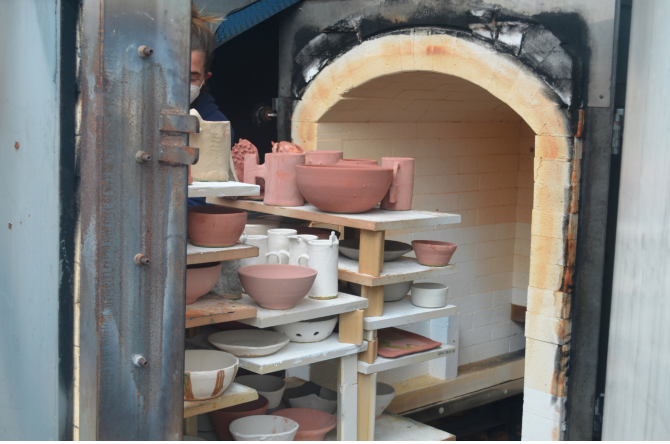
kiln is full it will be fired. The glazes on the bowls will melt and color them.
The Empty bowls fundraiser has lived for years as an
international project to fight hunger. It’s meant to be
personalized by whatever artist or community decides
to take up its name. Field took it up as a teaching opportunity.
“I knew I wanted to provide an opportunity to teach
students who do not take 3D art, don’t take ceramics.
If they wanted to try something in the studio I wanted
to give them that opportunity for all students,” Empty
bowls teacher, Sarah Riley explains as part of her
reasons for wanting the intersession. Sarah had
worked on a number of Empty bowls fundraisers
during college at elon in North Carolina “I used to plan
and facilitate an empty bowls…and had a memory of
doing that in college. I thought it might be good for
field students to do something like that”
Sylvia recalled the schedule of her first day while
on a jog. She explained that the group’s time was
split between two activities. In the morning, they
worked on starting and finishing their bowls and
cups. The bowls would be sold at school in an
auction the next week. Day one was an
opportunity for students with no experience to
learn how to do ceramics. More experienced
students like Sylvia got to practice and improve.
“ I’ve been doing ceramics for probably about a
year in total. Half a year doing it in middle school,
and so far this year I’ve been doing it. So that
probably adds up to about a year of experience,
most of which I’ve spent slab building….” she
explained. “And I’ve more recently started working on the wheel”
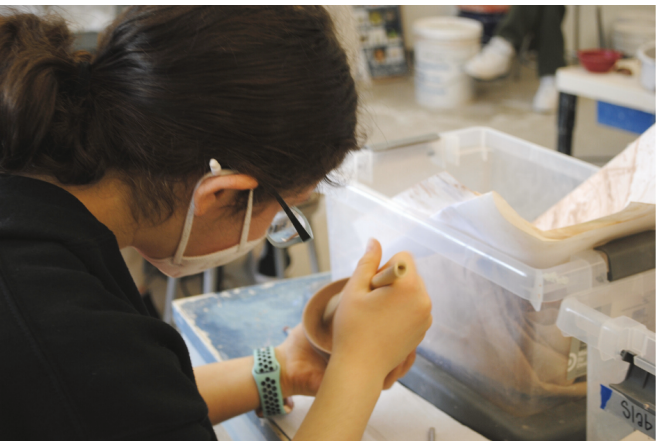
The School Day starts at 8:30. Most days it led into a
brief get together. Sylvia states that Monday, “after
that warm up we were told it was time to get
straight into making stuff cuz’ we had two weeks and
ceramics takes a while, so we had to get going as
fast as we could.” Ceramic work was a top priority
almost all of week one. The Students would sit down
at the table or at a wheel to prepare themselves.
Whoever’s present in the class went over what
needed to be worked on, and who needed help.
From then on until lunch came work time.
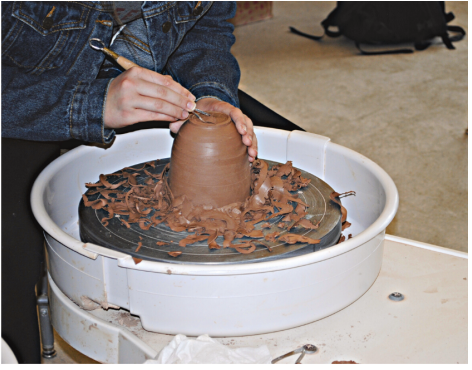
When free time was available the class grouped
together. They’d plan out their auction. It would be a
school-wide event. The students were given free reign
to name and price their bowls however they wanted.
And a partnership had been made with another
intersession group: The History and Chemistry of
Cooking. Many of the bowls would be sold alongside student recipes.
Most days, Sylvia noted, no more than 30 minutes
could be spared on discussions. Friday, Feb 18, was
one day in which time wasn’t a problem. There would
be no volunteer work after lunch. They had the rest of
the day to do as they pleased. Sarah had drawn on
the whiteboard a table naming 5 different groups:
everything that needed to be done for the auction.
Sylvia signed herself up for website development. The
auction would be online. To actually buy anything
they’d need to be a site to bid from. Sylvia Was
partnered with two other students: Julia and Maya.
For the rest of the day, they listed the titles and prices of everyone’s bowls .
Of the other groups, the poster makers sat closest to
the trio. The Bread for the City researchers and
Posters makers had talked about merging. Together,
they’d displayed the class’s research. The posters
would have information on BFC for anyone who
wanted to learn. Everything made would hold
information on BFC and food availability. They’re
promoting their bowls and teaching their mission: killing two birds with one stone.
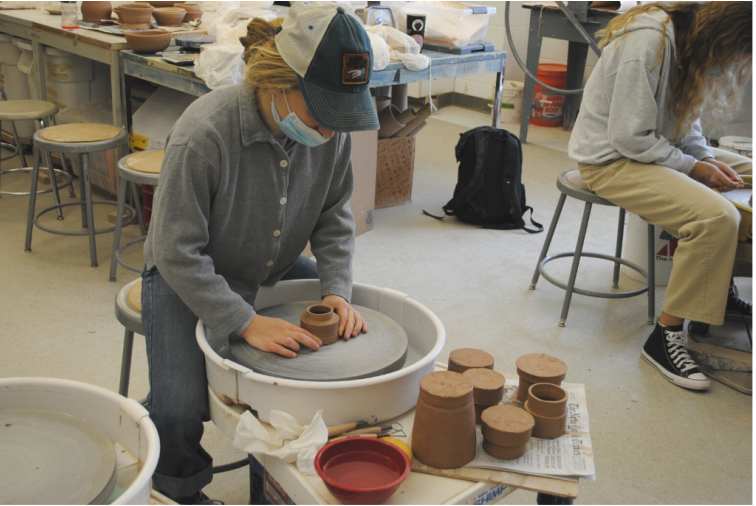
“So, we are carving these pots and then we’re going
to plan and have a fundraiser where we’re going to
sell these pots to friends and family and anyone
who’s in the field school on friday (feb 25)” Daniel
offered as an explanation of the classes work on
thursday feb 17. Like the other 5 students at a
wheel, he’d been working on trimming one of his
bowls “then we’re going to give the proceeds to
bread for the city. So we do this (ceramics) in the
morning and then in the afternoon we go to bread for the city and volunteer.”
After lunch the students volunteer. Even though they
don’t volunteer every day, they volunteer for the
same group, in the same place every time. The
students are to get on their bus and make their way
to Bread for the City’s southeast location: a 28,132
square foot center at 1700 Good Hope road, 8.2 miles away.
Talking at the table, Sylvia recalls that Field was the
only group there when they arrived. A group of 15
children all getting ready to work. She remembers
that not everyone was doing the same thing.. One
small group was set to triple bag. Sylvia was placed
in that group “I’d been taking bags – two plastic bags
and putting them around paper bags, because we
didn’t want food to just break out of the bags.”
Working on his bowl, Daniel recalled there was a
group of students who put food inside the bags. The
students, he said, placed onions and radishes into
plastic bags. Everything bagged was eventually given to people in need.
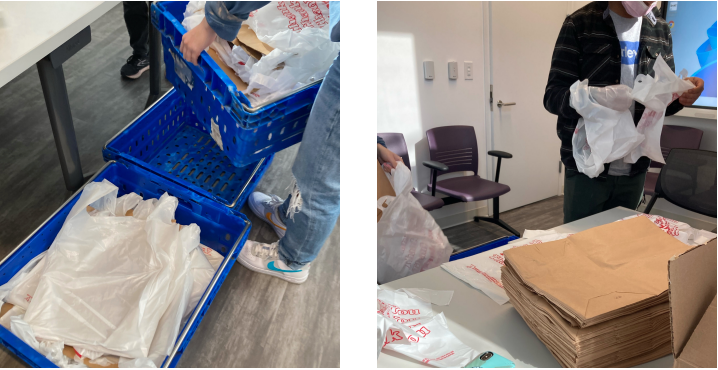
(left) students taking away finished bag sets (right)
“So far we’ve been taking cans that get donated and
organizing them into grocery bags which are then
given to people that come around” One student
explained. “people that just walk in no questions
asked, get a grocery bag and take off.” He enjoyed
volunteer work a lot and found BFC’s work very fun.
The students he’s talked to, he said, seemed to like it too.
“It was really great ‘cuz students on Monday went
and bagged a bunch of stuff and then went back on
Tuesday to help again and all of the bags that they
had packed weren’t there anymore so that means
someone got the bag someone used the food” said Sarah.
Bread for the people
Field partnered with Bread for the city in 1995, when 3
students were given internships at the organization. 1996,
another Field student worked with them. Over the last 40
years, Field students have partnered with Bread for the City
a total of 10 times. Empty bowls work now makes that 11.
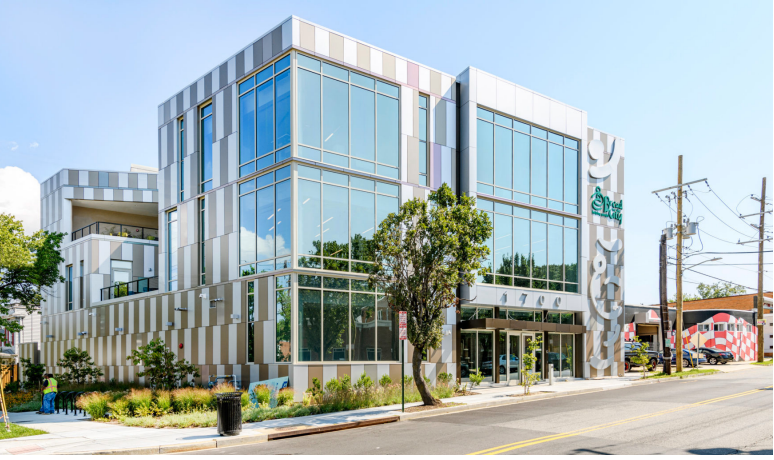
From their website, Michelle Marshall designs (MMD) image of the Michelle Obama
Southeast Center of Bread for the City. From January to February 2019 MMD was the
architect for Bread for the City’s new Southeast Center. “(We) help Washington, DC residents
living with low income to develop their power to determine the future of their own
communities. We provide food, clothing, medical care, and legal and social services to
reduce the burden of poverty. We seek justice through community organizing and public
advocacy. We work to uproot racism, a major cause of poverty. We are committed to
treating our clients with the dignity and respect that all people deserve.”
According to their website “Bread for the city”
originally existed as two separate organizations in There was its namesake, Bread for the city
made by Emmaus Fellowship. And Zacchaeus Free
Medical Clinic, opened by J. Edward Guinan and
Kathleen Guinan. Zachaeus Free was an outgrowth of
the Community for Creative Non-Violence (CCNV).
Bread for the city lived as the joint project of five neighboring churches.
Both organizations went through major growth
during the 1980’s. The demand for services
continued to rise. Clients grew from less than
1,000 a month to over 3,000. In the 1990’s Bread
for the city opened its first satellite site in
southeast D.C. They distributed food and clothing
from a loaned church basement. Eventually the
two realized it’d be mutually beneficial for them to
combine. They realized that because they worked
close together, shared clients, and were both
outgrowing their properties, they could be
merged. They shared the same goal. They both
wanted to grow. It only made sense to unite. The
shared organization was made official in 1995.
Today Bread for the city offers 6 primary programs
from their two centers in Northwest and
Southeast D.C. They serve an average of 10,000
D.C residents every month. The bread for the city
official website states that their food pantries pack
800-1500 grocery bags a day. Each Filled with food to be delivered to people in need.
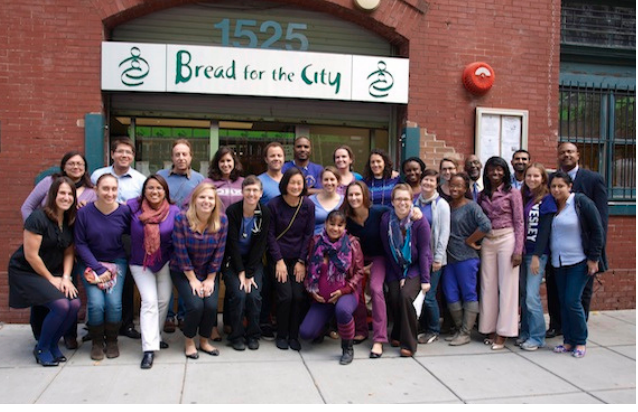
Hunger in DC
“Food insecurity is created by a couple major factors.
The first one is availability. It can be really hard to find
healthy nutritious food near you when you live in
what’s called a food desert. And a food desert can be
an area (with)…. no easy access to food.” Hopkins
explained. Starting Friday Feb 18, Empty bowls began
teaching more on the second half of its name – hunger in DC.
“A food desert could be just one mile if you live in a city
with no sidewalks. And so availability is one big factor.
Even if you have stores near you, they may not have
healthy food, that’s still a food desert. If you don’t have
nutritious healthy food” (maybe replace with inflation)
Outside the ceramics room, Sarah had explained that
empty bowls students were encouraged to research
anything they could about food insecurity. Hunger in
DC is right in the name of the intersession. It’s
something that needs to get focused on. And since
ceramics were mostly out of the way it was something
she wanted to be learned about. “the students have
been researching online using their website and
reading testimonies from people who used the
services at bread for the city to try to get some more
information that we can share with the greater Field community.”
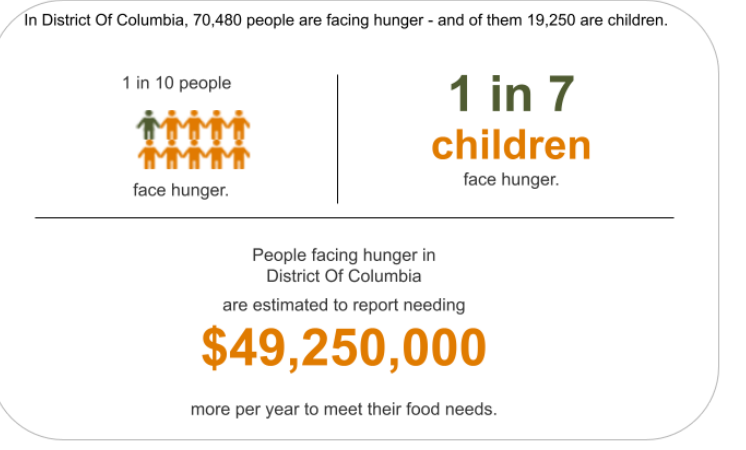
currently affected by food insecurity
Students learned that 30% of Americans are food
insecure. 1 in 6 Americans don’t have enough to
eat. Citizens in poverty can’t afford to eat healthy
because healthy food is too expensive. And most
‘healthy food’ isn’t really healthy because 70% of
foods made are processed, according to the
documentary, A Place at the Table.
With its auction, Empty bowls will be giving its earnings
to bread for the city to help fund its growth. They’ll be
giving out information on food insecurity to anyone who
wants to learn. Sarah’s artistic vision hopes to have a
broader impact: “[I] wanted to kind of find a way to
authentically connect with a community outside the field
Community but like our neighbors and DC. That’s why
we partnered with bread for the city which is a great
organization that provides a lot of resources to folks
living in DC who are seeking out resources”
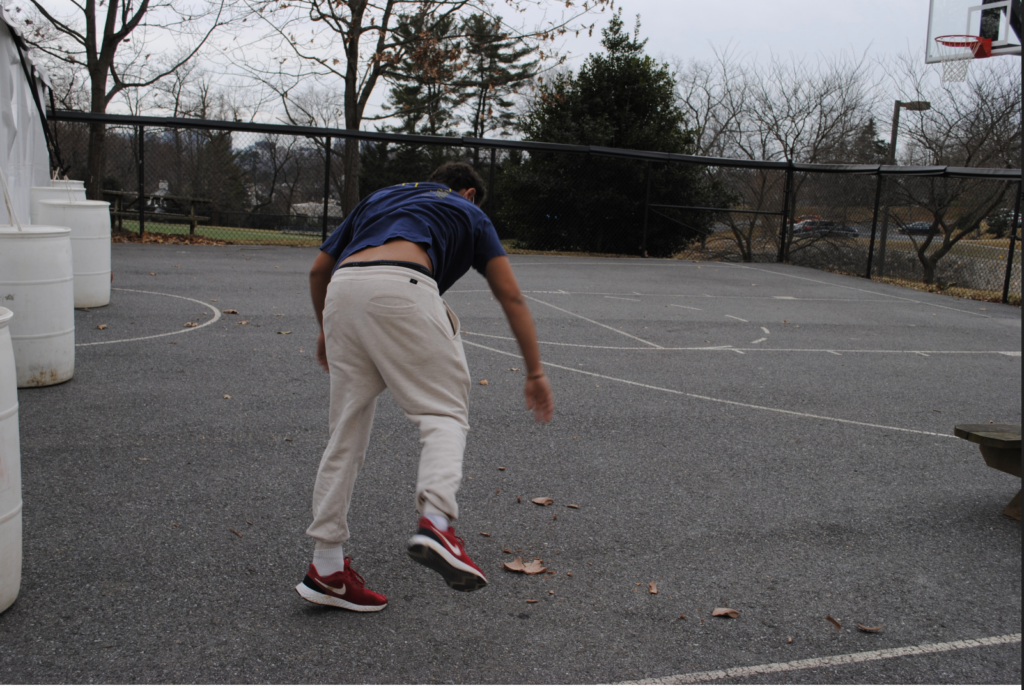
Sources used
https://breadforthecity.org/our-history/
https://hunger-report.capitalareafoodbank.org – capital
food bank part 2
https://www.feedingamerica.org/hunger-in-
america/district-of-columbia (9)
https://michaelmarshalldesign.com/project/bread-for-
the-city/ (10)
Processed foods make up 70 percent of the US
diethttps://www.marketplace.org › 2013/03/12 ›
processed-fo… (11)
To help/learn more
https://www.feedingamerica.org/hunger-in-america/district-of-columbia
https://www.capitalareafoodbank.org/blog/newsroom
/press-releases/covid-19-has-taken-a-dramatic-toll-
on-the-food-security-of-children-and-latino-families/

